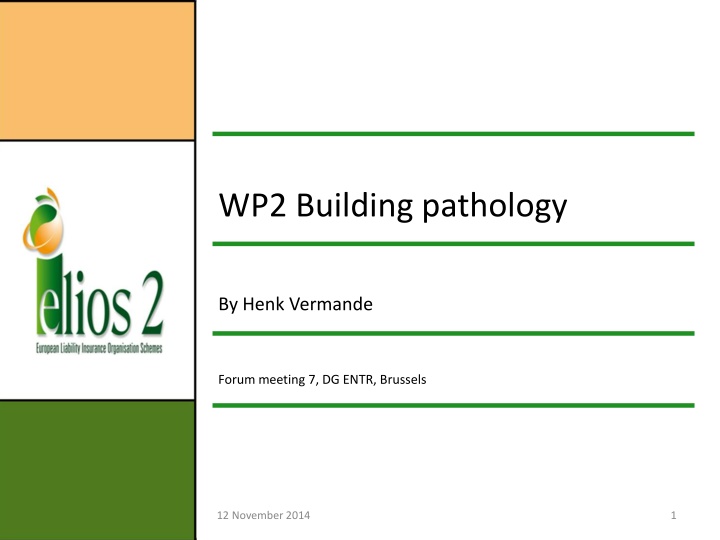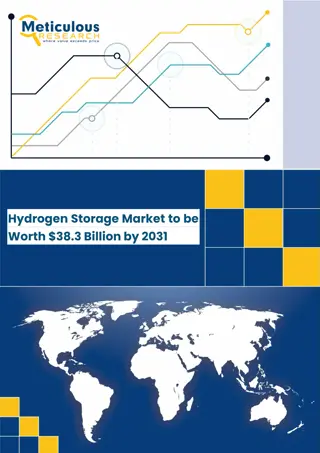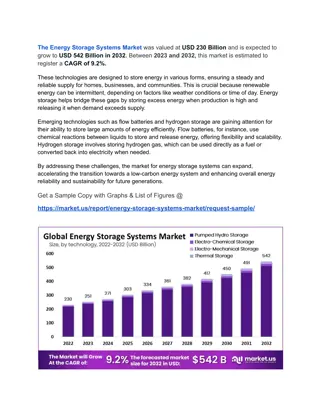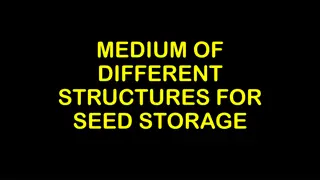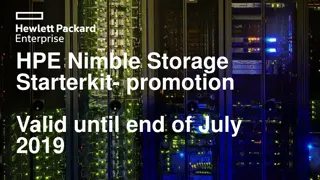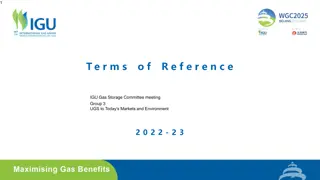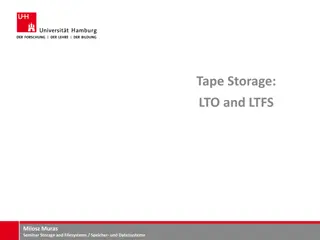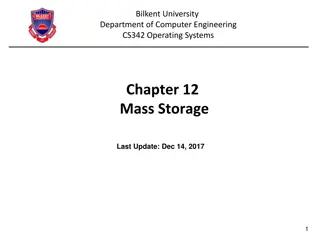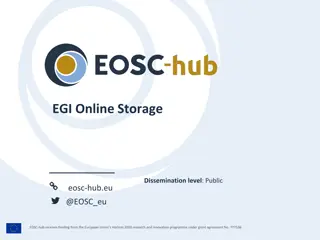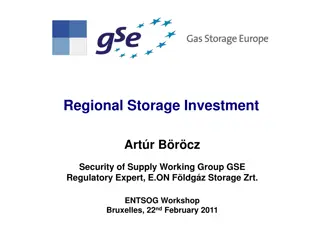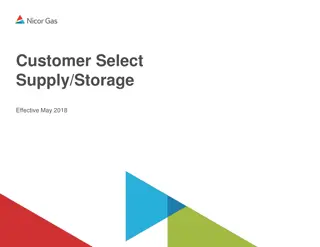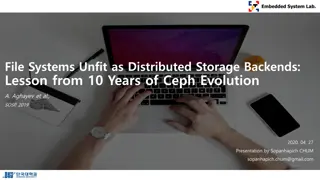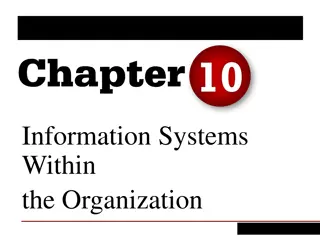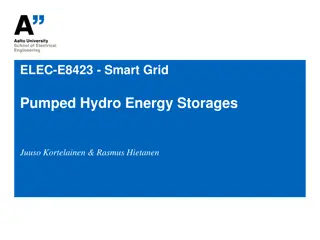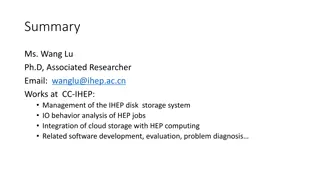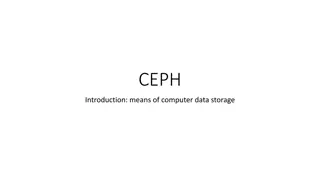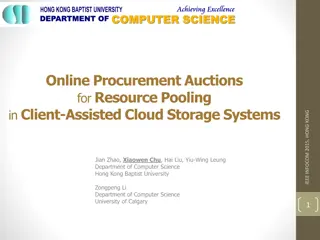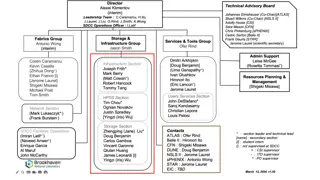Overview of Wide Area Storage Systems
This overview delves into the challenges of modern web-scale applications and introduces solutions like regional data centers for improved availability, reduced latency, and disaster recovery. It covers key concepts such as single and multi-object accesses, consistency models, and the role of major players like Microsoft Azure.
Uploaded on Mar 15, 2025 | 0 Views
Download Presentation

Please find below an Image/Link to download the presentation.
The content on the website is provided AS IS for your information and personal use only. It may not be sold, licensed, or shared on other websites without obtaining consent from the author.If you encounter any issues during the download, it is possible that the publisher has removed the file from their server.
You are allowed to download the files provided on this website for personal or commercial use, subject to the condition that they are used lawfully. All files are the property of their respective owners.
The content on the website is provided AS IS for your information and personal use only. It may not be sold, licensed, or shared on other websites without obtaining consent from the author.
E N D
Presentation Transcript
WP2 Building pathology By Henk Vermande Forum meeting 7, DG ENTR, Brussels 12 November 2014 1
Outline Business models for the operation of a future pathology database Conclusions 12 November 2014 2
Business model canvas (Osterwalder & Pigneur) 11 June 2014 3
Value Propositions Evidenced: Giving access to information on pathology cases presented in a uniform way; Providing a Warning procedure (or hazard notification procedure), where interlocutors in each country can report issues/defects; Providing an overview of quality signs for eco-technologies; Potentially: Providing a tailored risk analysis of certain eco-technologies for specific customers; Research institutes could quickly investigate the transnational joint pathologies. Pathology information sheets with lessons learned , for example education or training institutes. 12 November 2014 4
Revenue Streams Usage fee: each customer pays a fee for access to the database. The more a service is used, the greater the revenue streams. Subscription fees: customers buy (monthly or yearly) a continuous access to the database. Consultancy fees: customers pay for certain products or services delivered by the EQEO organisation, e.g. publications, pathology information sheets, risk analysis, etc. 12 November 2014 5
Activities Collecting data, maintaining a database and secretariat, quality management; Possibly: Evaluation of data; Technical expert analysis; Publication of (evaluated) information and dissemination; Inspectors visiting building sites; 12 November 2014 6
Business models for the future database/EQEO 1. Non-profit with free public access; 2. (Semi-)commercial with access on a subscription basis; 3. Mix of commercial non-profit 4. Give-and-take with limited access to a group of partners; 12 November 2014 7
Weighting Access ++ (free public access) - (paid access) Scope ++ Cost - (no Model 1: Non-profit (can be as broad as the sponsors want) +/- (scope depends on commercial revenues) + (scope depends partly on commercial revenues) +/- (scope is limited to, and depending on the input of the partners) revenues) ++ (profit- based) Model 2: Commercial Model 3: Semi- commercial +/- +/- (some services for free, others against a fee) - - (limited access to a group of partners) (partly profit- based) ++ (low costs to collect data) Model 4: Give-and- take 12 November 2014 8
CONCLUSIONS 12 November 2014 9
1. Quality in construction for insurers Building pathology can be considered as the appearance of lack of quality (or non- quality ) of construction works. Non-quality indicators of construction are in fact statistical indicators of a large set of building pathology data. 12 November 2014 10
2. Availability of building pathology data Literature: Mostly on deterioration and remedial work of ancient work and traditional building methods; But: defects of some eco-technologies have been studied for a number of years and received some attention; Insurers: Confidential; National organisations (AQC, Danish BDF, NHBC, Woningborg): Only for a specific purpose and for their local market; Other organisations: Not in a systematic manner; Information on defects of eco-technologies is scarce anyway; Mostly low-key: for internal knowledge-sharing, do s and don ts , lessons learned. 12 November 2014 11
3. Relationship between risk assessment and building pathology Pathology information may help the insurer in his risk assessment: Qualitatively Quantitatively For innovative products/technologies, there is less to no historical information available from claims. The information from claims is usually not very useful. Pathology information on innovative products/ technologies can only be used qualitatively. 12 November 2014 12
4. Needs from insurers A database with pathology records, that provides qualitative technical information on the pathology of eco-technologies (without any statistical data disclosure of claims). A Warning procedure An overview of quality signs for eco- technologies 12 November 2014 13
5. Pilot pathology database The pilot database was populated with 64 pathology cases, representing experiences with defects and failures of 4 eco- technologies in 10 countries. The distinction between defect and failure is, and remains difficult in practice. The field most often used was general description of the pathology . 12 November 2014 14
6. Support for an EQEO Support by a significant number of people in the European construction industry. Insurance Europe: supports the objective of increased availability and exchange of information on a cross- border level, and believes that the EQEO could be the right platform for such exchange ( ) It has the potential to improve the quality and availability of the information for insurers and other stakeholders in the construction sector dealing with eco-technologies on a regular basis. Such data-gathering initiative should also help reduce knowledge deficits during the underwriting process (i.e. when insurers assess the risk) . CEBC: CEBC can agree on the principle of the creation of the EQEO. EQEO can help to reduce this huge cost of non quality (5-15% of turnover). 12 November 2014 15
However: Pathology information is scarce; Transfer of knowledge on pathology from one country to another and making the information comparable is difficult. It would be necessary for each technology to describe the specific constructive and climatic issues. Keeping the database up to date is difficult. Finance It would need incentives and for the active members of this observatory. 12 November 2014 16
